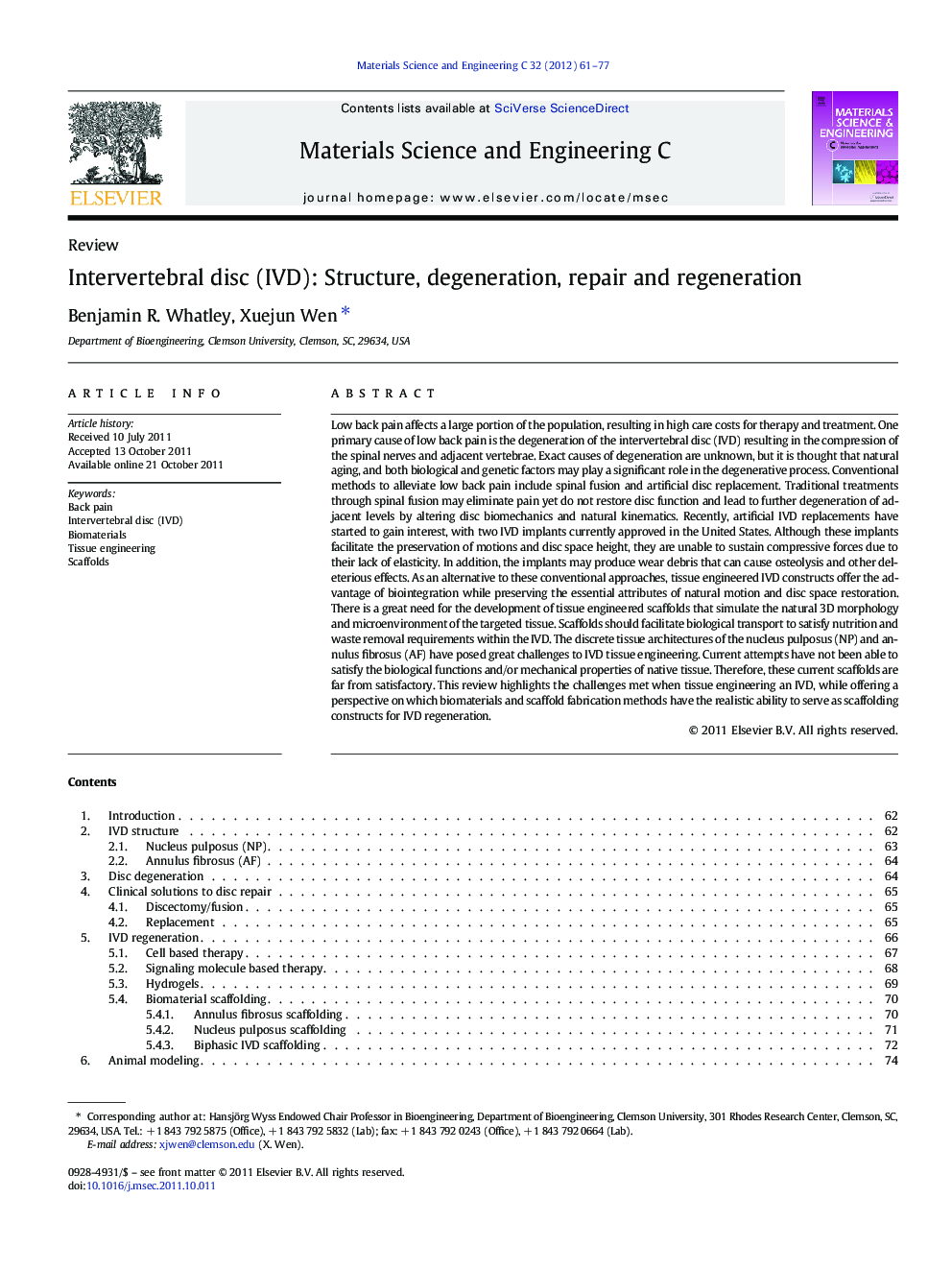| Article ID | Journal | Published Year | Pages | File Type |
|---|---|---|---|---|
| 1429552 | Materials Science and Engineering: C | 2012 | 17 Pages |
Low back pain affects a large portion of the population, resulting in high care costs for therapy and treatment. One primary cause of low back pain is the degeneration of the intervertebral disc (IVD) resulting in the compression of the spinal nerves and adjacent vertebrae. Exact causes of degeneration are unknown, but it is thought that natural aging, and both biological and genetic factors may play a significant role in the degenerative process. Conventional methods to alleviate low back pain include spinal fusion and artificial disc replacement. Traditional treatments through spinal fusion may eliminate pain yet do not restore disc function and lead to further degeneration of adjacent levels by altering disc biomechanics and natural kinematics. Recently, artificial IVD replacements have started to gain interest, with two IVD implants currently approved in the United States. Although these implants facilitate the preservation of motions and disc space height, they are unable to sustain compressive forces due to their lack of elasticity. In addition, the implants may produce wear debris that can cause osteolysis and other deleterious effects. As an alternative to these conventional approaches, tissue engineered IVD constructs offer the advantage of biointegration while preserving the essential attributes of natural motion and disc space restoration. There is a great need for the development of tissue engineered scaffolds that simulate the natural 3D morphology and microenvironment of the targeted tissue. Scaffolds should facilitate biological transport to satisfy nutrition and waste removal requirements within the IVD. The discrete tissue architectures of the nucleus pulposus (NP) and annulus fibrosus (AF) have posed great challenges to IVD tissue engineering. Current attempts have not been able to satisfy the biological functions and/or mechanical properties of native tissue. Therefore, these current scaffolds are far from satisfactory. This review highlights the challenges met when tissue engineering an IVD, while offering a perspective on which biomaterials and scaffold fabrication methods have the realistic ability to serve as scaffolding constructs for IVD regeneration.
► Comprehensive review on IVD repair. ► Covers disc structure, pathology, treatments (clinical and developmental), and modeling. ► Highlights important research works on IVD degeneration and repair. ► Emphasizes importance of new materials and treatments to improve current techniques.
